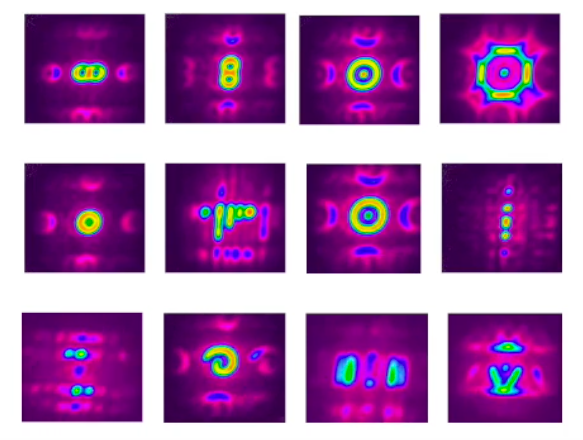The Fraunhofer Institute for Material and Beam Technology (Fraunhofer IWS) is experimenting with a new, high-powered metal 3D printing technology. Based on a technology called coherent beam combining (CBC), the institute’s dynamic beam shaping process can deliver varying levels of energy across a build area at once.
Fraunhofer IWS is now the first research facility globally to install a 13kW “Dynamic Beam Laser” from Israeli firm Civan Laser. The device is capable of delivering a variety of energy distribution patterns quickly by joining together multiple individual beams into a single ray of energy. Due to the phase shifts of the separate beams, it can create different patterns—such as a horseshoe, a figure eight, or a ring—with different energy intensities across the shape.
“The “Dynamic Beam” laser from Jerusalem has now been installed at Fraunhofer IWS in Dresden. The institute is thus the first research institution worldwide to utilize such a laser solution.” Image courtesy of Fraunhofer IWS.
While such techniques are possible with mirrors and other optics, oscillating mirrors require time to align energy patterns. Civan’s laser, however, can achieve this feat in just microseconds, making it a thousand times more rapid than an oscillating mirror setup.
As a part of Europe’s ShapeAM project, Fraunhofer IWS will work with Civan Lasers and A. Kotliar Laser Welding Solutions to explore how the technology can be applied to 3D printing. This includes the production of titanium and aluminum items for space, medical implants, and lightweight parts for mobility. Dynamic beam shaping is believed to produce higher quality parts through the elimination of defects.
“Thanks to ‘coherent beam combining’, the 13-kilowatt laser can generate energy distribution patterns thousands of times faster during operation compared to conventional mirror-based methods. This speed makes it possible for the first time to use dynamic beam shaping for additive manufacturing of metals.”
“This laser will push the limits of materials processing, for example in medical technology and aerospace,” said Dr Andreas Wetzig, head of the cutting and joining program at Fraunhofer IWS.
“We plan to use novel beam shapes and control frequencies that are not achievable with other methods to overcome challenges in crack-sensitive materials,” said Dr. Elena Lopez, head of additive manufacturing at Fraunhofer IWS.
The team will set about testing a variety of materials and beam profiles before exploring such applications as how to 3D print, cut, or combine workpieces made from difficult-to-work-with materials and composites. It is believed that the technology will offer faster and finer control over the melt pool to produce parts and cuts without burrs twice as fast as traditional fiber lasers.
